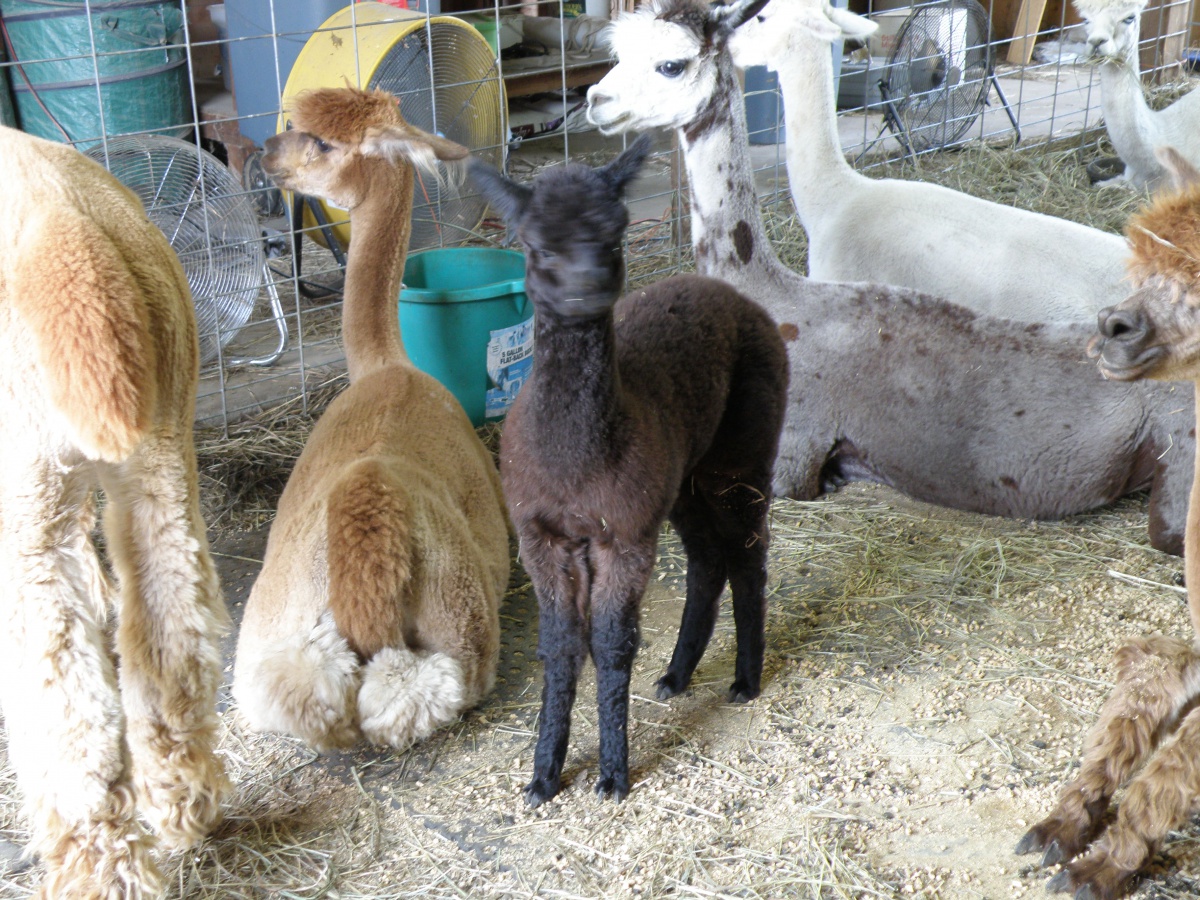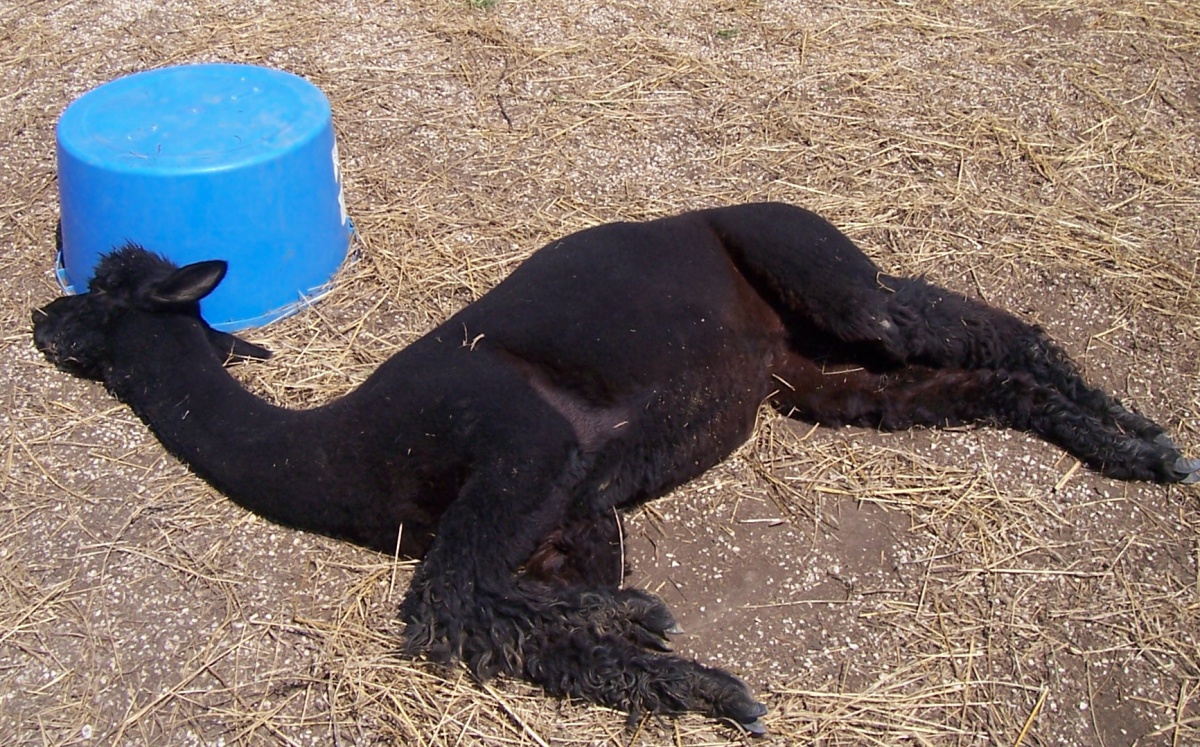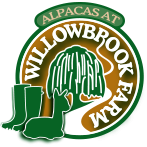Alpacas find dealing with heat and humidity in summer challenging. We have found they can learn to adapt if we give them some support. It goes without saying that they need to be sheared before the summer heat ramps up. Here in Kansas we shear in April. If you have a very dense animal you can give them a belly shear later in the summer too. If you want to show your animals in the fall, shearing the belly to prevent heat stress is allowed.
Providing shelter is critical. This can be the barn or field shelter, or the natural shade of trees in the pasture. The branches of an old tree can provide a large area of shade and has the advantage of allowing access to any breeze that might be blowing. Animals in the barn need access to fans to keep the air moving. If there are no trees in the pasture, shade cloth is a good alternative. It is quite simple to create a shady lounging area using gates and fences or you can purchase a frame along with the shade cloth from FarmTek.
Another key element for summer comfort is access to cold water. It is not always possible to have water in the shade although this is ideal. You need to check on the water frequently throughout the day to make sure it is cool and topped up. If it is possible to install automatic waterers is some areas, this will cut down on the work involved. It is very important to make sure the alpacas do not become dehydrated. You can add electrolytes to one or more buckets to encourage them to drink more.
Alpacas love to have their bellies sprayed with water to help cool them down. The best time to do this is in the evening when they come in for the night. This can help bring down their core body temperature as the outside temperatures also cool. Doing it during the day tends to encourage them to go out in the sun again as they feel cooler, when you would really like them to stay in the shade. Of course, there are always those alpacas who insist on sunbathing in the full sun at the hottest part of the day!


